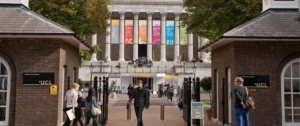The UK’s reputation as a global hub for education and opportunity draws countless immigrants and international students each year. But how do British people really feel about these newcomers? Are they welcomed with open arms or met with skepticism? Drawing from major surveys like the European Social Survey (ESS), British Social Attitudes (BSA), YouGov, and firsthand accounts from students and migrants, this blog uncovers the key traits shaping British attitudes. From hospitality to hidden biases, here’s the full picture—SEO-friendly and packed with insights for anyone curious about life in the UK as an outsider.
1. Conditional Hospitality: Warm, But With Strings Attached
The British are often described as polite and welcoming, but surveys show this hospitality comes with conditions. According to YouGov (2017), 54% of Brits support immigration when newcomers integrate, learning English, work, and pay taxes. For international students, this translates to a warm reception on campuses—think friendly lecturers and helpful staff—as long as they’re seen as contributors. The British Council notes students often feel welcomed in academic settings, but there’s an unspoken expectation: adapt quickly to local norms or risk standing out.
- Why It Matters: For students paying £15,000–£35,000 in tuition, this conditional kindness can feel like a fair trade—or a subtle pressure cooker.
2. Skepticism Toward Illegal Migration (But Students Get a Pass)
Surveys like the Migration Observatory’s Kantar poll (2023) reveal a stark divide: over 70% of Brits want tighter controls on illegal migration, citing strains on the NHS and housing. The Economist’s 2010 data backs this—illegal entries spark anxiety. Yet, international students on valid visas rarely face this heat. Why? They’re seen as temporary and economically beneficial, contributing £20 billion annually (GOV.UK). BSA (2013) found that 77% want immigration reduced overall, but students often dodge the backlash, viewed as “the good kind” of migrant.
3. Polite but Reserved: The British Standoffishness
Ever heard of British reserve? It’s real. The ESS (2022) and Gallup (2020) highlight a consistent trait: Brits are courteous but slow to warm up. For immigrants and students, this means smiles and small talk—especially in cities like London—but deep friendships take time. Online forums (e.g., Quora, student blogs) echo this: “They’re nice, but I’m still the outsider after six months.” This aloofness isn’t hostility—it’s cultural. Rural areas are cooler, while urban hubs score higher for openness (Migration Observatory).
4. Sensitivity to National Identity: A Cultural Undercurrent
National pride runs deep, and it shapes attitudes. A BBC survey (2024) found 60% of Brits feel immigration pressures their identity—think debates over “British values” post-Brexit. BSA (2014) adds fuel: 95% say speaking English is key to being “truly British.” For students and migrants, this can mean curious stares or questions like “Where are you really from?”—especially if you’re non-white. Cities like London (80% pro-migration, Migration Observatory) buck this trend, but smaller towns reflect it more.

5. Occasional Xenophobia: A Minority, But Loud
Let’s not sugarcoat it—xenophobia exists. YouGov (2017) found over 50% harbor bias against certain groups (e.g., Arabs, Muslims), and Home Office data shows a 70% spike in hate crimes like Islamophobia. Students from Asia or the Middle East sometimes report microaggressions—cold stares in rural pubs or offhand comments—per online testimonials. Yet, ESS (2022) shows a majority (59%) see immigration as economically positive, suggesting this negativity is a vocal minority, not the norm.
6. Economic Pragmatism: Contribution Trumps Origin
Here’s a twist—Brits often prioritize utility over prejudice. The ESS (2022) notes 59% view immigration as good for the economy (up from 17% in 2002), and Kantar (2023) found 62% support for easier entry for NHS workers. Students get nods too—53% favor keeping or increasing their numbers (Ipsos, 2024). Why? They fill gaps—£10 billion in tuition alone—and leave after their Graduate Visa. BSA (2021) shows that graduates (60%) see this value more than those without qualifications (17%).
7. Political Polarization: A Divided Lens
Attitudes are split hard by politics. ESS (2022) found Labour supporters (78%) cheer immigration’s economic boost, while only 48% of Conservatives agree. BSA (2023) notes a widening gap—24% of Tories vs. 53% of Labour see it positively. These colors perceptions: Conservative areas may feel chillier, while Labour strongholds like Manchester embrace diversity. Students often land in liberal uni towns, dodging the worst of this divide.
Why Attitudes Vary: The Big Picture
- Location: London’s 47% migrant population (Census 2021/22) breeds tolerance; rural Yorkshire, less so.
- Age & Education: Younger, degree-holding Brits (ESS 2022) lean positive—58% see cultural enrichment vs. 33% in 2002.
- Exposure: NatCen (2024) says contact with migrants softens views—urban Brits with diverse neighbors rate higher on acceptance.
What This Means for Immigrants and Students
The UK isn’t a monolith. You’ll find polite nods, cautious smiles, and the odd skeptic—sometimes all in one day. Students often fare better than other migrants—your tuition and temporary stay signal “low risk, high reward.” But integration matters: learn the lingo, respect the queues, and you’ll tilt the odds in your favor. Surveys like ESS and BSA show a trend—attitudes softened post-2016 (56% say the UK’s better for it)—yet pockets of unease linger.
Final Thoughts: Navigating the British Welcome
British attitudes blend hospitality with pragmatism, seasoned with a dash of reserve—and yes, occasional bias. For international students and immigrants, it’s a mixed bag: a warm uni welcome, a cooler rural reception, and a national debate that’s still evolving. Want the full scoop? Check GOV.UK or NatCen’s latest reports. Your UK journey’s shaped by where you land and how you adapt—ready to dive in?









